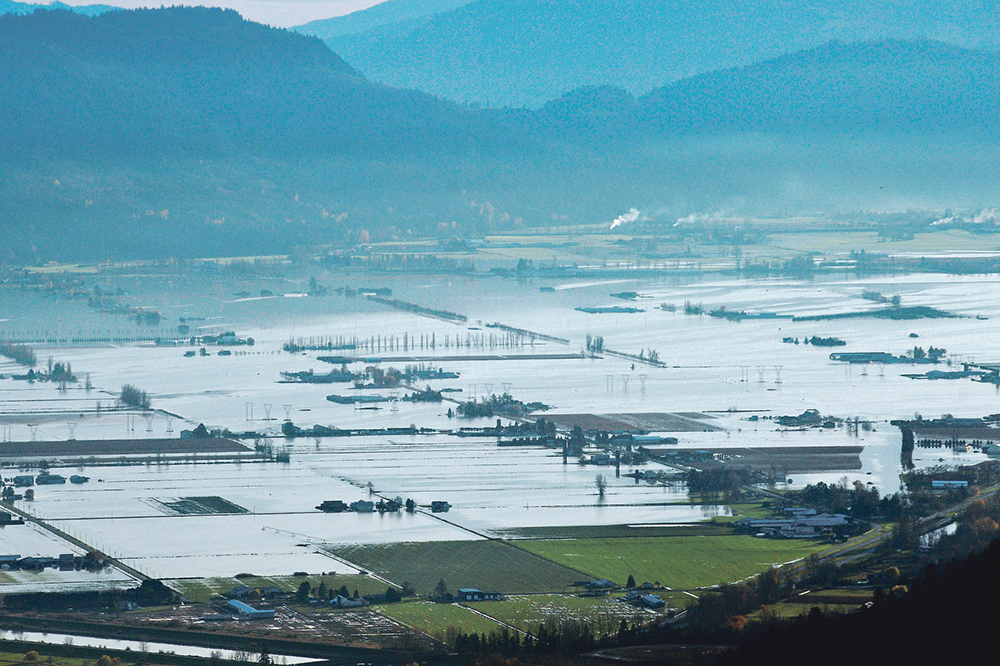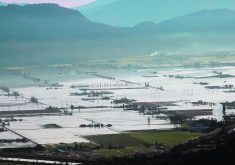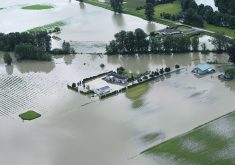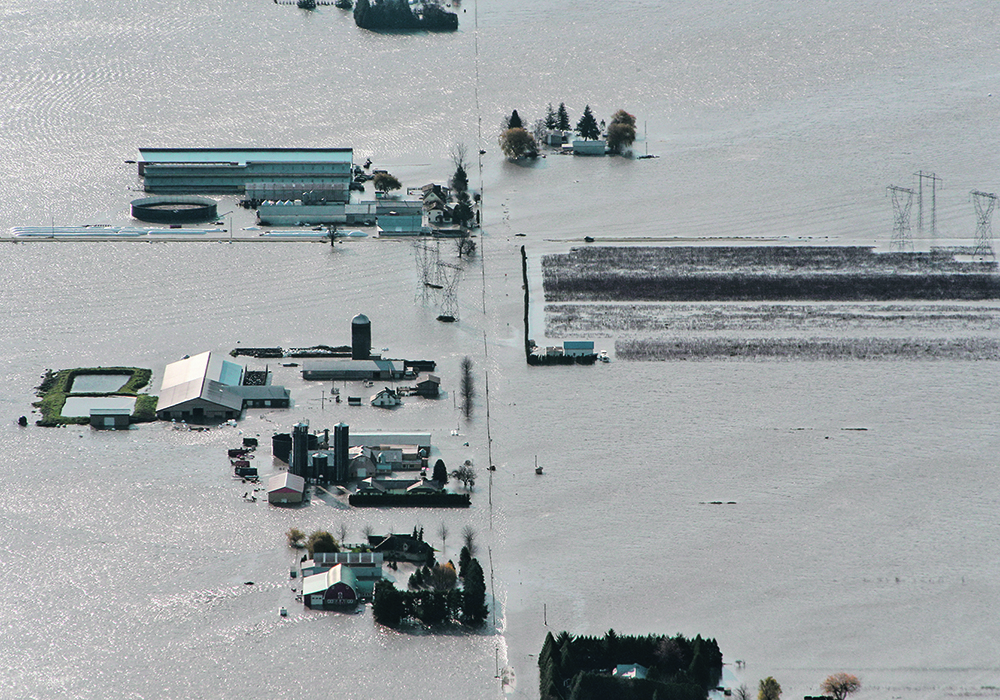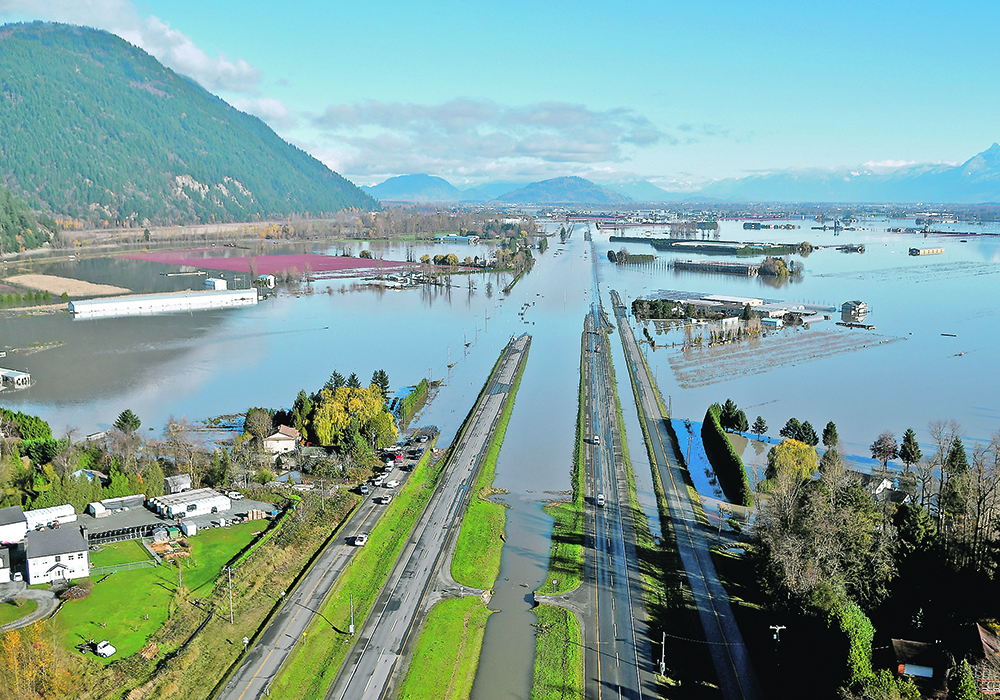Governments must join forces to develop a flood control plan for British Columbia’s Fraser Valley and protect farmers and communities there, said a federal senate committee.
“At the rate that Canada is warming, we know major floods will reoccur and the damage they cause would be much worse,” said Ontario senator Robert Black, chair of the standing senate committee on agriculture and forestry.
“(The) committee heard that if the Fraser River overflowed its banks, the resulting damage would be at least 10 times greater than that out of the 2021 floods. The fact that communities are not properly protected is deeply troubling.”
Read Also

Using artificial intelligence in agriculture starts with the right data
Good data is critical as the agriculture sector increasingly adopts new AI technology to drive efficiency, sustainability and trust across all levels of the value chain.
Flooding last November caused an estimated $285 million in damage to B.C. producers, affecting more than 1,000 farms and 2.5 million livestock. It also shut down many roads and railways.
The disaster served as a wake-up call for farmers across Western Canada. Its effects reached far beyond B.C.’s borders when transportation links to west coast ports were severed, said Alberta senator Paula Simons, committee deputy chair. Producers are at the forefront of climate change in other ways as well, she said.
“They (producers) are the ones who are trying to figure out how much irrigation they need,” she said in an interview. “They’re the ones who are figuring out how they’re going to get feed for their cattle through the winter, so no one has more skin in the game than western farmers and ranchers when it comes to dealing with climate change. The problem is the solutions are not going to be easy.”
A report on the flooding in B.C. was released Oct. 27 by the committee, after meeting with 23 witnesses.
The B.C. government said it looked forward to the federal response to the report’s recommendations. It pointed to ongoing work and what it called a strong working relationship with Ottawa and First Nations as part of the joint committee on disaster response and climate resilience, which wrapped up in July.
“In the last five years, many components toward a comprehensive plan for flood mitigation in the Fraser Valley have been advanced through work on the Lower Mainland Flood Management Strategy,” said an email Oct. 27 by the B.C. Ministry of Agriculture and Food.
“Diking authorities and communities throughout the Lower Mainland continue to invest in dike upgrades and other flood mitigation work, supported by the province through access to funding programs and guidelines. Regional or watershed-based approaches to flood risk management are reflected in what we heard in the engagement to date toward a provincial flood strategy….”
Black said a study prepared for the B.C. government in 2015 found that 87 percent of dikes were in less than fair condition, with 71 percent expected to fail by overtopping in the event of a flood. However, no action was taken despite officials knowing for years about the problem, said Simons during the interview.
Producers have also faced delays accessing financial assistance to help them recover from flooding, said Simons during the news conference.
“Six months after the flood — six months — the president of the B.C. Pork Producers Association said that many of his members still hadn’t received some of the financial support they had been promised by both levels of government.”
However, up to $228 million in federal-provincial support was made available over the past year to help B.C. farmers who suffered extraordinary damages, said an email Oct. 28 by Agriculture and Agri-Food Canada. The province and Ottawa also agreed to permit late participation in AgriStability so farmers who failed to register for the program in 2021 could still benefit.
They also agreed to boost the 2021 AgriStability interim payment to 75 percent, up from 50 percent, to allow producers to “access a greater portion of their benefit early to meet their urgent needs.”
The disaster particularly affected farmers in the Sumas Prairie area in the Fraser Valley near Abbotsford, which is the site of a former lake drained to create farmland in the 1920s. Significant rainfall caused the Nooksack River in the neighbouring state of Washington to overflow and rush over the Canadian border into Sumas Prairie, said Simons.
“In addition to last year, the river flooded and badly in 1990, 1995 and in 2006. This is a long-standing issue that residents, First Nations and governments have been concerned about for many years.”
It has been estimated that 14 percent of the farms in the Fraser Valley generate nearly 40 percent of the province’s gross annual farm receipts, said the report. “We heard loud and clear B.C. farmers want to see more urgency placed on infrastructure upgrades,” said Black.
“Unfortunately, dike and pump station upgrades would cost several billion dollars and municipalities cannot afford that cost on their own … the federal government must play a role in helping the B.C. government update the province’s outdated flooding infrastructure to protect Fraser Valley residents, farmers and their livelihoods.”
The report made three recommendations to the federal government, including collaboration with provincial and municipal governments to develop a plan for flood control in the Fraser Valley that includes a timeline for dike upgrades and the establishment of a committee to examine flood mitigation measures and emergency preparedness strategies.
It also recommended federal entities such as Agriculture Canada and Public Safety Canada contain enough financial and human resources to help individuals, firms and communities affected by natural disasters.
Ottawa needs to make certain financial aid, as well as humanitarian relief and personnel, can be easily accessed in a timely manner, said the report. “In this context, attention should be paid to the AgriRecovery, AgriStability and Disaster Financial Assistance Arrangements programs, among other relevant federal measures.”
However, the federal government in collaboration with the provinces has “already made improvements to the business risk management programs and all have supported the idea of incorporating climate risk in the future,” federal Agriculture Minister Marie-Claude Bibeau said in an Oct. 28 email.
The federal, provincial and territorial ministers of agriculture recently reached an agreement in principle for the Sustainable Canadian Agricultural Partnership for 2023 to 2028. They agreed to improve business risk management (BRM) programs, including boosting the AgriStability compensation rate to 80 percent, up from 70 percent.
An email from Agriculture Canada said agriculture ministers also agreed to review the implications of climate change on BRM programs and agreed in principle to a $250 million Resilient Agricultural Landscape Program to support ecological goods and services provided by the agriculture sector.
The senate committee’s report also recommended that Canada and the United States discuss the management of transboundary waters, including the Nooksack River.
B.C. Premier John Horgan and Washington Governor Jay Inslee announced a transborder initiative in March that to review the frequent and severe flooding of the Nooksack River.
Visit https://bit.ly/3Nl5ZN6 to view a copy of the senate committee’s report.
Contact doug.ferguson@producer.com


